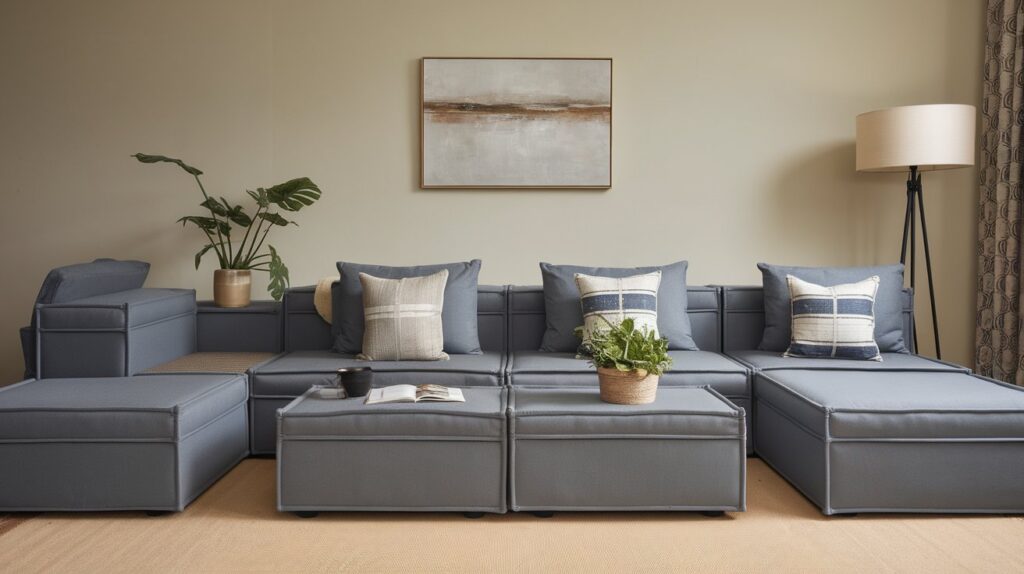Picture this: you’ve finally found the perfect sofa. It fits your living room like a glove, matches your decor beautifully, and then life happens. Maybe you’re moving to a smaller apartment, or suddenly you need more seating for your growing family. That gorgeous sofa? Well, it’s about as adaptable as a concrete block.
This is exactly why modular sofas have been gaining so much attention lately. But here’s the big question: are they actually worth the extra cash, or just another furniture trend designed to empty your wallet?
What Makes Modular Sofas Different?
The thing is, modular sofas aren’t just regular sofas with fancy marketing. They’re built in separate sections that you can rearrange, add to, or subtract from whenever your needs change. Think of them as furniture Lego for grown-ups.
Instead of being stuck with one configuration forever, you can switch things up. Need an L-shape for movie night? Done. Want to separate the sections for a party? Easy. Moving to a different room layout? No problem.
The Money Talk
Let’s be honest about the elephant in the room. Modular sofas typically cost more upfront than traditional ones. But here’s where it gets interesting. When you break down the long-term value, the math starts looking pretty different.
Traditional sofa owners often find themselves in this cycle: buy a sofa, live with it for a few years, then replace it when life changes. New apartment? New sofa. Different needs? Another new sofa. Those costs add up fast.
With modular pieces, you’re essentially future-proofing your furniture investment. Need more seating? Buy an extra section rather than a whole new sofa. Moving somewhere smaller? Store a section and use it later.
Real-Life Flexibility in Action
Ever noticed how your living room needs to change throughout the year? During summer, you might want an open, airy feel with separate seating. Come winter, everyone wants to huddle together on one big couch for warmth and movie marathons.
The other day, someone mentioned how they’ve been using their modular sofa for three years now, and it’s been configured at least six different ways. From hosting dinner parties to creating a cozy reading nook, the same pieces keep adapting to whatever life throws at them.
Actually, this adaptability extends beyond just room layouts. Families with young kids love how they can create safe play areas by separating sections. Empty nesters appreciate downsizing without starting from scratch.
Quality Considerations
Here’s where things get a bit tricky. Not all modular sofas are created equal, and the connection systems vary wildly between manufacturers. Some use simple clips that might loosen over time, while others employ more sophisticated mechanisms.
The new modular sofa from Eva, for instance, focuses heavily on connection stability and build quality. When you’re investing in modular furniture, these details matter because you’ll be moving pieces around regularly.
Making the Investment Decision
So, are they worth it? The answer depends on your situation. If you’re someone who moves frequently, likes to redecorate, or has changing space needs, modular sofas make a lot of sense financially.
But if you’ve found your forever home and know exactly how you like your furniture arranged, a traditional sofa might be perfectly fine.
The truth is, modular sofas work best for people who value flexibility and see their living situation as somewhat fluid. They’re particularly great for renters, growing families, or anyone who simply enjoys switching up their home layout regularly.
When you factor in the potential to avoid multiple furniture purchases over the years, that higher upfront cost starts looking more like smart financial planning than an expensive splurge.

